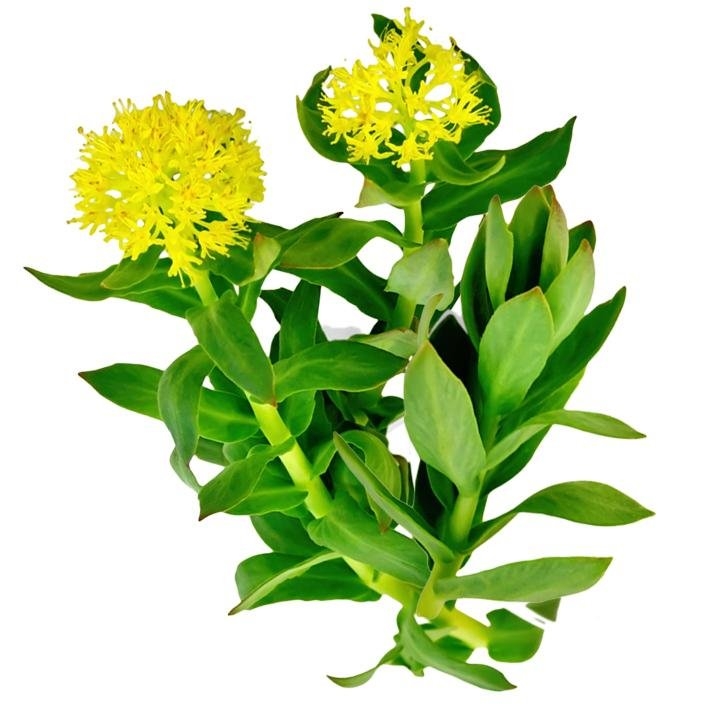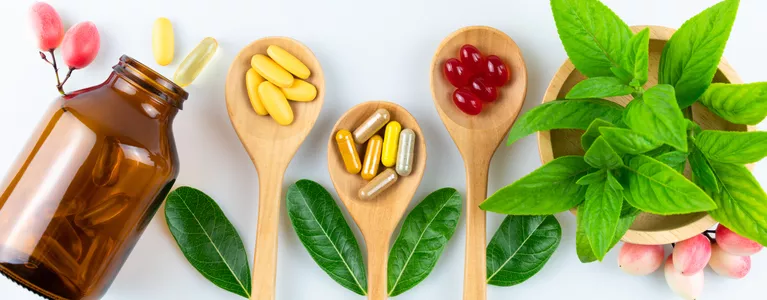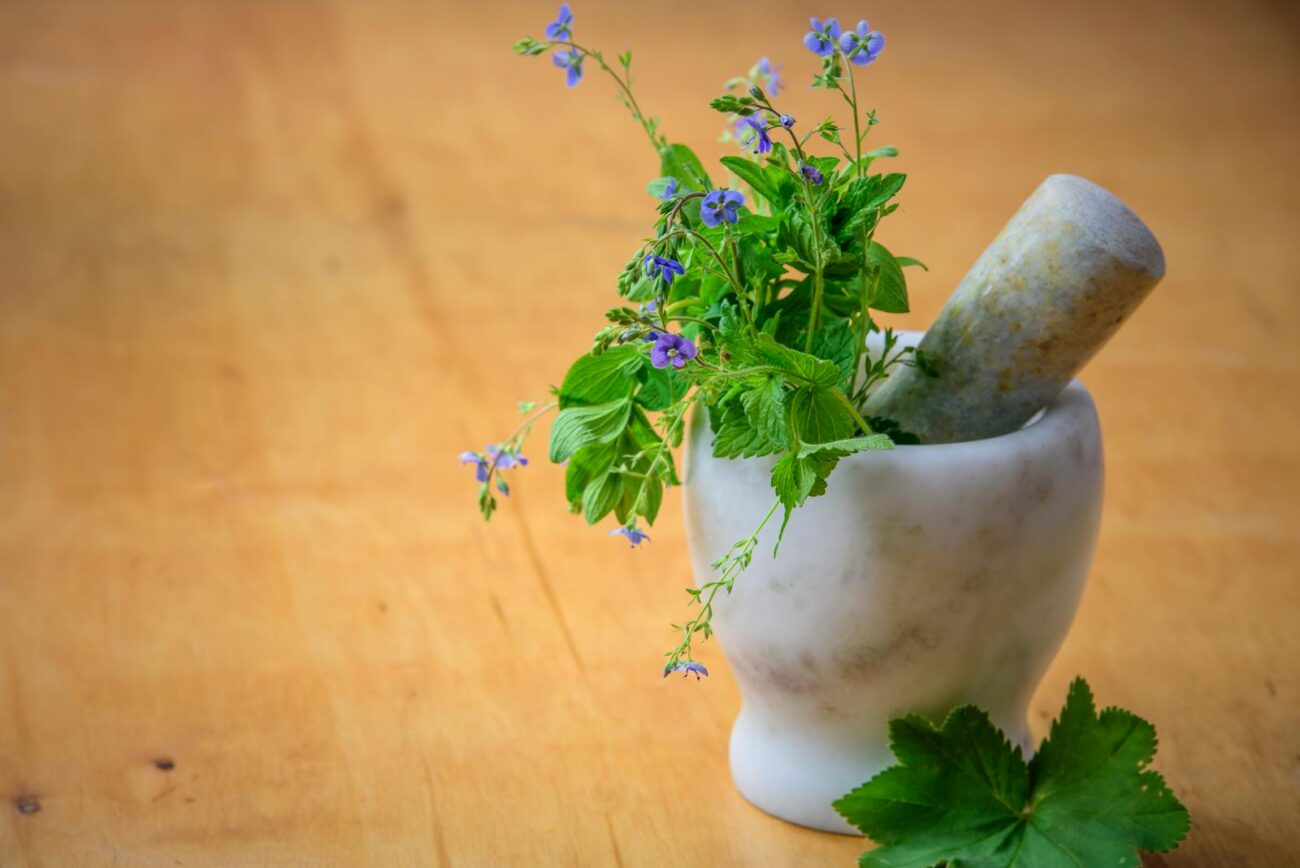Over the years, I’ve noticed something interesting while studying plants in extreme environments, high mountains, rocky soils, places with blazing sun exposure. Certain species develop compounds that protect their own cells from stress, and it turns out, those same compounds can influence human physiology, helping the body stay balanced under physical or mental strain.
These plants are called adaptogens. They don’t just give you a burst of energy or knock you out, they help your internal systems respond to stress more smoothly. Watching how they grow and adapt has given me a lot of insight into their practical uses in daily life.
About Adaptogens
Adaptogens are plants that help the body deal with stress. They don’t force a quick boost or slow you down, they just help your systems adjust naturally.
A plant is called an adaptogen if it’s safe to use, helps the body manage physical or emotional stress, and supports multiple systems at the same time, like energy levels, brain signaling, and antioxidant defenses.
Interestingly, these benefits come from compounds the plants make when they’re stressed themselves, things like lignans, rosavins, ginsenosides, and withanolides. These chemicals protect the plant’s cells, and when we use them, they seem to interact with our cells in similar ways.

The Biochemistry of Adaptogens
1. Regulating Stress Hormones
Stress triggers hormone release that affects energy, focus, and mood. Chronic stress can drain energy and impair performance. Adaptogens modulate hormone pathways without overstimulation.
Withanolides in Withania somnifera (ashwagandha) interact with receptors that balance stress hormones, promoting steady energy and mental clarity.

Eleutherosides in Eleutherococcus senticosus (Siberian ginseng) enhance the body’s resilience to physical and environmental stress, stabilizing energy during prolonged challenges.

These compounds support balanced physiological responses, helping the body maintain equilibrium rather than pushing it into high alert or fatigue.
2. Enhancing Cellular Energy
Adaptogens influence mitochondrial efficiency, improving ATP production and reducing oxidative stress.
Rosavins and salidroside in Rhodiola rosea enhance electron transport chain function, enabling cells to generate energy more efficiently.

Withanolides in ashwagandha protect mitochondria from oxidative damage.
Field studies reveal that plants exposed to high-altitude oxygen stress accumulate higher concentrations of these compounds, providing greater biochemical benefits when consumed.
Improved cellular energy supports steady endurance, sharper focus, and less fatigue throughout the day.
3. Supporting Neurotransmitter Balance
Stress affects neurotransmitters like serotonin, dopamine, and GABA, influencing mood and cognition. Adaptogens modulate these pathways to maintain mental clarity and calm alertness.
Ginsenosides in Panax ginseng influence dopamine and acetylcholine pathways, enhancing focus and motivation.
Eugenol and ursolic acid in Ocimum tenuiflorum (holy basil) modulate GABA signaling, supporting calm alertness.

This biochemical regulation creates balanced cognitive performance without overstimulation.
4. Activating Antioxidant Defense
Chronic stress increases free radical formation, which can damage cells and accelerate fatigue. Adaptogens boost antioxidant defenses, enhancing resilience:
Schisandra chinensis contains lignans that increase enzymes such as superoxide dismutase (SOD) and glutathione peroxidase, protecting cells from oxidative stress.

Lignans also support liver detoxification pathways, helping the body manage environmental and metabolic stressors.
Observing Schisandra in its natural habitat, I noted that plants exposed to harsh UV light or cold develop higher lignan concentrations, showing a direct link between environmental stress and phytochemical potency.
Comparison Table of Adaptogens
| Plant | Key Compounds | Biochemical Effects | Main Benefits | Best Use |
|---|---|---|---|---|
| Ashwagandha | Withanolides, Sitoindosides | Stress hormone regulation, mitochondrial support | Mental clarity, reduced fatigue | Daily stress adaptation |
| Rhodiola | Rosavins, Salidroside | ATP synthesis, neurotransmitter support | Endurance, mental focus | Morning energy or work focus |
| Siberian Ginseng | Eleutherosides | Glycogen storage, oxygen utilization | Sustained energy, immune support | Physical training or recovery |
| Holy Basil | Eugenol, Ursolic Acid | Neurotransmitter modulation, anti-inflammatory | Calm focus, steady energy | Mental clarity and calmness |
| Schisandra | Schisandrins | Antioxidant, liver support | Recovery, oxidative stress protection | Post-exercise or environmental stress |
| Panax Ginseng | Ginsenosides | Neurotransmitter, nitric oxide synthesis | Physical & mental performance | Energy and focus |
Scientific Insights from the Field
Some of the most interesting lessons don’t come from lab data, they happen out in the field. I’ve noticed again and again that stress in a plant’s environment directly shapes its chemistry.
In the high plateaus where Rhodiola rosea grows, the thin air and low oxygen seem to push the plant to make more salidroside. That extra compound shows up later as better support for energy production.
I once collected Withania somnifera roots from a particularly dry region, the soil was cracked, almost no moisture. Those samples had visibly higher levels of withanolides. It’s a clear sign that drought stress pushes the plant to build stronger protective chemistry.
Something similar happens with Schisandra chinensis. The berries that grow under harsh sunlight, especially in open forest edges, often have a deeper pigment and more lignans, the same compounds linked to antioxidant strength.
These patterns always remind me that plants under stress don’t weaken, they adapt. And those adaptive compounds are the same ones that help humans manage their own forms of stress when used thoughtfully.
Integrating Adaptogens Into Daily Life
Start small, that’s what I tell anyone new to adaptogens. Pick one plant first and give it time. Observe how your body responds over a couple of weeks before mixing anything else in.
I usually recommend powders, teas, or standardized extracts since they keep the active compounds intact. Once you understand your response, you can experiment with gentle combinations.
For example, Rhodiola with Holy Basil is a solid pairing, one builds stamina and focus, the other calms the mind and supports clarity.
Most traditional systems also suggest taking short breaks, roughly six to eight weeks on, then a week or two off. That pause keeps your body sensitive to the compounds instead of getting used to them.
FAQs
1. How do adaptogens improve resilience?
They basically help your body roll with stress instead of crashing under it. By balancing hormones, neurotransmitters, and antioxidants, things just work more smoothly when life gets heavy.
2. How quickly will I notice effects?
Most folks feel small changes after a couple of weeks, less tension, maybe better focus. It’s not instant, though. The effects tend to build the longer you stay consistent.
3. Can I combine multiple adaptogens?
Yeah, that’s fine.It’s best to keep it simple at first, something like Rhodiola for steady energy and Holy Basil to help you unwind. See how your body reacts before adding more..
4. Are adaptogens safe for long-term use?
For most people, yes. Stick with clean, standardized extracts and follow normal dosing. They’re meant to support balance, not push limits.
5. Which adaptogen is best for focus and calm?
Holy Basil’s great for mental clarity, and Panax Ginseng adds a bit of focus without the buzz. Together, they work quietly but effectively.
6. Can adaptogens replace stimulants?
Not exactly. They don’t give that quick jolt like coffee does, but they help your cells make and use energy better, so you feel steady instead of spiking.
7. How does the plant’s environment affect potency?
It’s pretty cool actually, plants grown in rough weather (cold, wind, strong sun) build up stronger compounds. That same stress resilience is what we benefit from.
8. How do I ensure quality?
Check labels carefully. Latin names, where it’s sourced, and third-party testing all matter. If that info’s missing, skip it.
9. Can adaptogens help with exercise recovery?
Yeah, totally. Schisandra and Rhodiola especially help reduce oxidative stress and shorten recovery time after workouts.
10. How should I cycle adaptogens for best effect?
Try using them for six to eight weeks, then take a short break. That rest keeps them effective so your body doesn’t get too used to them.
Summary
Adaptogens help your body manage the demands of modern life more smoothly. Pick one or two, stay consistent, eat well, and get enough sleep, you’ll likely notice steadier energy and clearer focus.
They demonstrate how balance can be maintained under pressure. With regular use, that calm, steady endurance can become a natural part of your daily routine.


